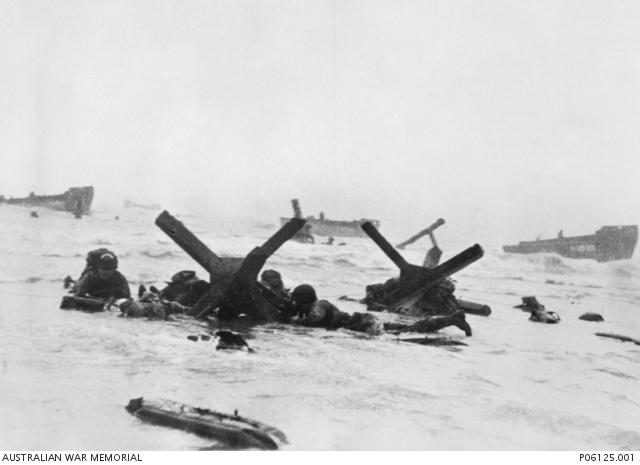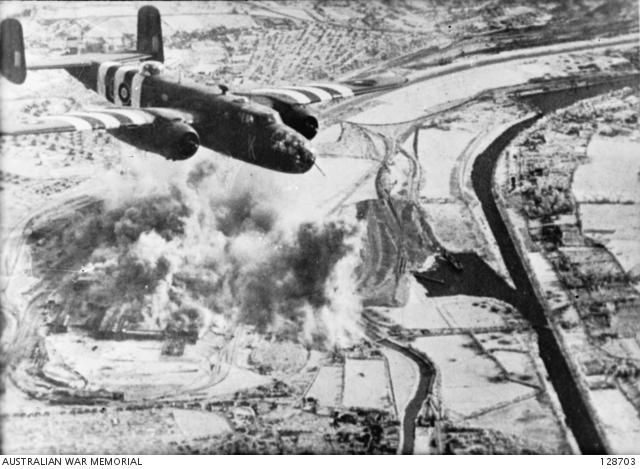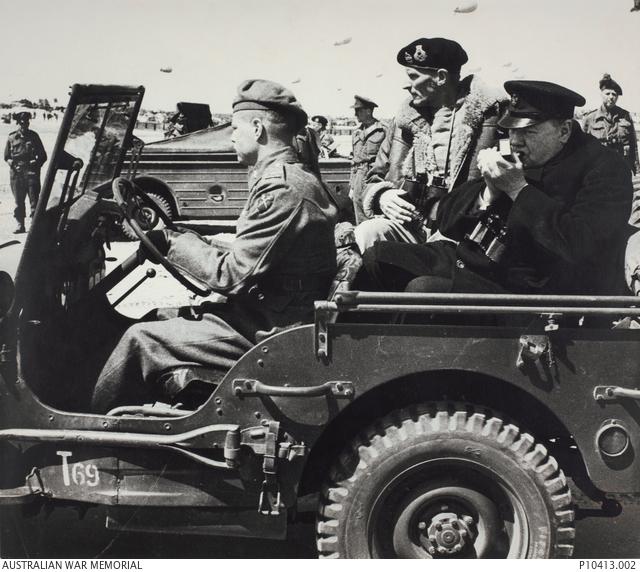The battle for Normandy: 70 years on

Photographer Robert Capa's famous image of American troops on Omaha Beach during the Normandy D-Day landings on 6 June 1944.
The battle for Normandy was one of the greatest military campaigns of the modern era, and this year marks the 70th anniversary of the fight to liberate Western Europe from Nazi occupation.
The Memorial’s Wartime magazine is commemorating the D-Day landings of 6 June 1944 with a special issue featuring analysis by acclaimed international authors of the invasion and of the lesser-known story of Australia’s involvement in Operation Overlord.
“The courage and the sacrifice of those Allied soldiers who fought in that campaign of attrition can never be doubted,” writes British historian and bestselling author Antony Beevor.
D-Day was the largest amphibious landing ever attempted. More than 5,000 ships were part of the invasion fleet, with air support from over 6,000 aircraft. The multinational force – including Australians – topped 156,000 troops. Many more would come ashore in the following days and months to fight a ruthless and determined foe.
The Normandy invasion put into action the 1942 Declaration by the United Nations to “defend life, liberty, independence and religious freedom, and to preserve human rights and justice”. Its importance to the Allied cause during the Second World War cannot be understated.
In his feature for Wartime, Beevor gives an overview of the battle for Normandy and provides insight into the effects of the invasion, from the psychological trauma experienced by Allied troops to the impact on French civilians.
“Despite Churchill’s attempts in Overlord’s preparatory bombing phase to limit French casualties to 10,000, in fact over 15,000 died,” he writes. “Three thousand died on D-Day alone, more than all the American casualties on Omaha and Utah beaches combined. And the battle for Normandy as a whole, from 6 June until the end of August, cost another 20,000 French lives. It is a truly sobering thought that during the Second World War more French civilians were killed by Allied bombing and shelling than the total number of British civilians killed by the Luftwaffe and the flying bombs.”

An RAF B-25 Mitchell bomber on a raid on the steel works at Caen, 22 June 1944.
Acclaimed author Nigel Hamilton, who wrote the official biography of Field Marshal Bernard “Monty” Montgomery, gives a personal account of the task of writing about the man who planned the D-Day landings – and what he discovered to be the commander’s real strengths and weaknesses.
“The three volumes I was able to research and write between 1977 and 1988 I count among the most fulfilling work of my life," he writes. "The battles he fought, first as a division commander, then army commander, and finally army group commander, were among the seminal battles of modern history: Dunkirk, Alamein, Sicily, D-Day, Arnhem, the battle of the Bulge. Yet unless one understood the man, I felt, one could not really understand the commander he became. I therefore embarked on a ten-year odyssey, seeking to interview every member of his family, his (few remaining) friends, his colleagues and subordinates … The Monty that emerged stunned me.”

British Prime Minister Winston Churchill lights a cigar, seated next to Field Marshal Sir Bernard Montgomery, during a tour of the Normandy beaches, 12 June 1944.
Australian historian Robin Prior addresses a long-running debate over American and British attitudes to the invasion, particularly the portrayal of a Britain reluctant to carry out the Normandy landing but forced into it by its increasingly powerful US ally.
“In fact there was disagreement, but it was about timing rather than about whether the landing should be made at all,” Prior writes.
Other features in the Normandy issue look at the Australian participation in the campaign. Memorial historian Lachlan Grant writes that the Australian participation in the invasion and subsequent battle for Normandy was one of the more costly campaigns – in terms of lives lost – fought by Australians during the Second World War.
Consideration is also given to the plight of the Russians at the time of the Normandy campaign, with author David Stahel writing on the Soviet offensives:
While the German High Command deployed 58 divisions in the west in June 1944, only 15 of these were in the immediate area of the Normandy landings. By contrast, Germany and her allies retained some 228 divisions on the Eastern Front.
The cover of Wartime Issue 66 features one of the most famous photographs of the Second World War, depicting the D-Day landing on Omaha Beach of the troops of E Company, 16th Infantry Regiment of the United States 1st Infantry Division. It is an image that represents, as Churchill said, “much the greatest thing we have ever attempted”.
Wartime Issue 66 is now on sale through the Memorial shop and in newsagents.